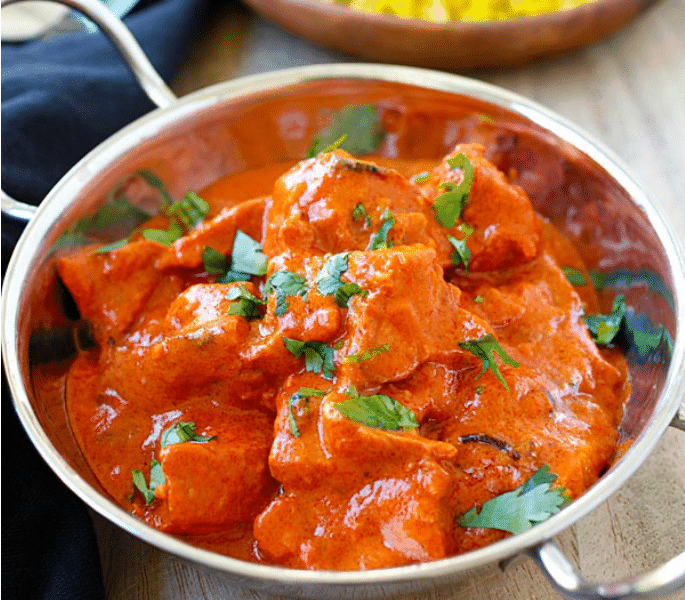Hello ladies and gents this is the Viking telling you that today we are talking about
Exploring Chicken Tikka Masala
It's Not Indian . . . It's British!
The curry dish chicken tikka masala is wildly popular in England. It's so prevalent, so popular, so every-day that it’s referred to as CTM. Roughly 2.5 billion pounds of it were sold in the United Kingdom in 2009. In fact, British Foreign Secretary Robin Cook declared it to be the national dish of Great Britain.
Oh, but that’s just it—CTM wasn’t created in south Asia centuries ago and then transported to the United Kingdom with colonialism. Many food historians think it began this way.
In the 1970s there was a restaurant in the west end of Glasgow, Scotland named Shish Mahal. Although by then curry houses were commonplace in the United Kingdom, this one stood out from the rest. The owner, Ali Ahmed Aslam, did not simply offer curry. Those who walked into his restaurant were welcomed with smartly-dressed waiters, a rich décor, and a dazzling choice of menu options.
As the story goes, a tired and famished truck driver came in and ordered a chicken tikka. He complained that the dish was too dry and sent it back to the kitchen. As everyone knows, Brits love their gravies and sauces, and so the chef pulled a few items off the shelf to revive the dish—a can of tomato soup, spices, a dab of yogurt—and chicken tikka masala was born.
Three Important Components of CTM
- Chicken: Boneless, skinless chicken breasts are the usual choice because they are lean and cook quickly. I prefer to use chicken thighs; I think the dark meat has more flavor and, although it takes a little longer to cook, it remains moist. It's possible to buy boneless, skinless thighs, but they are really pricey. You can also do your own (with practice). I take the easy way out and use skinless, bone-in thighs (and legs too if that's what's available). Yes, they take longer to cook, but I prepare my CTM on a low simmer. The bones also add some gelatin to the sauce which helps to thicken.
- Marinade: This is truly what makes a perfect masala; the blend of spices will make it, or break it. The perfect CTM marinade begins with a perfect garam masala. I'll give you my recipe below.
- Sauce: The third component is the sauce, a blend of tomato and cream. We won't be using the Shish Majal's original rescue effort with a can of tomato soup. Canned tomatoes are pureed in a blender until smooth as silk, and then mixed with coconut milk. Yes, most recipes recommend heavy cream, but coconut milk has all the richness without the guilt.

Comments
Post a Comment